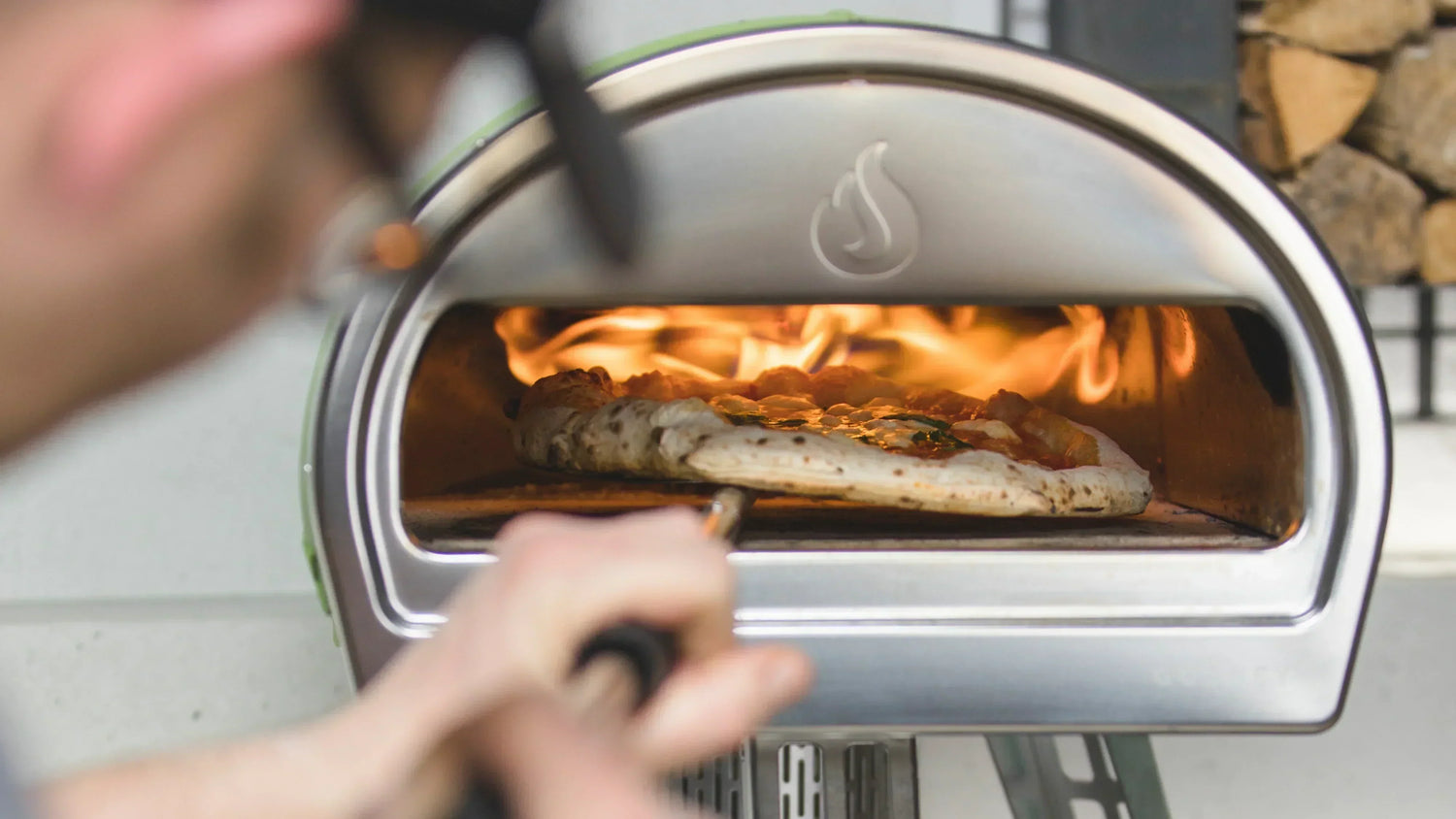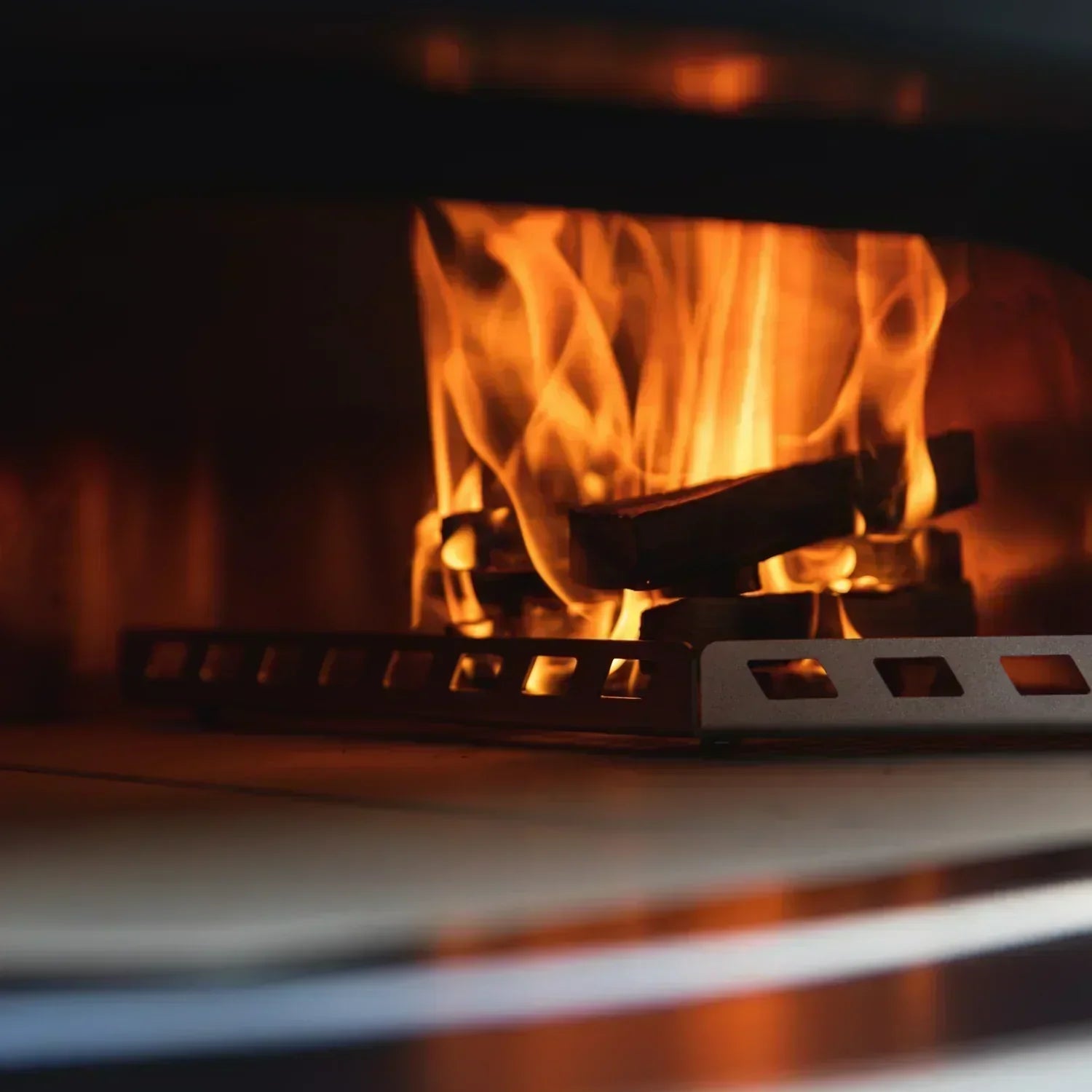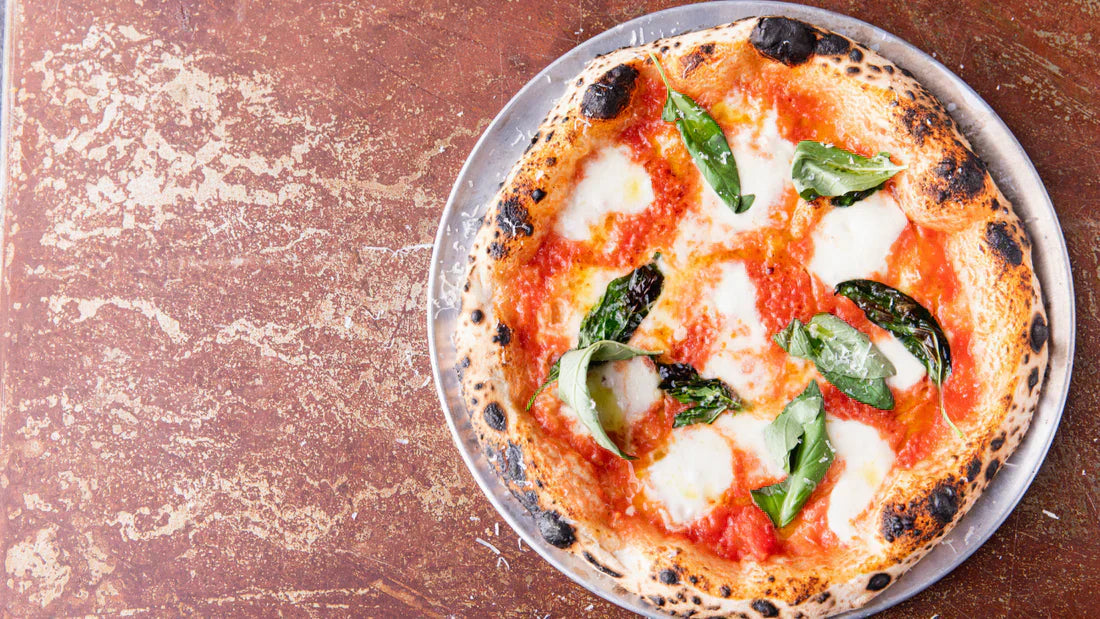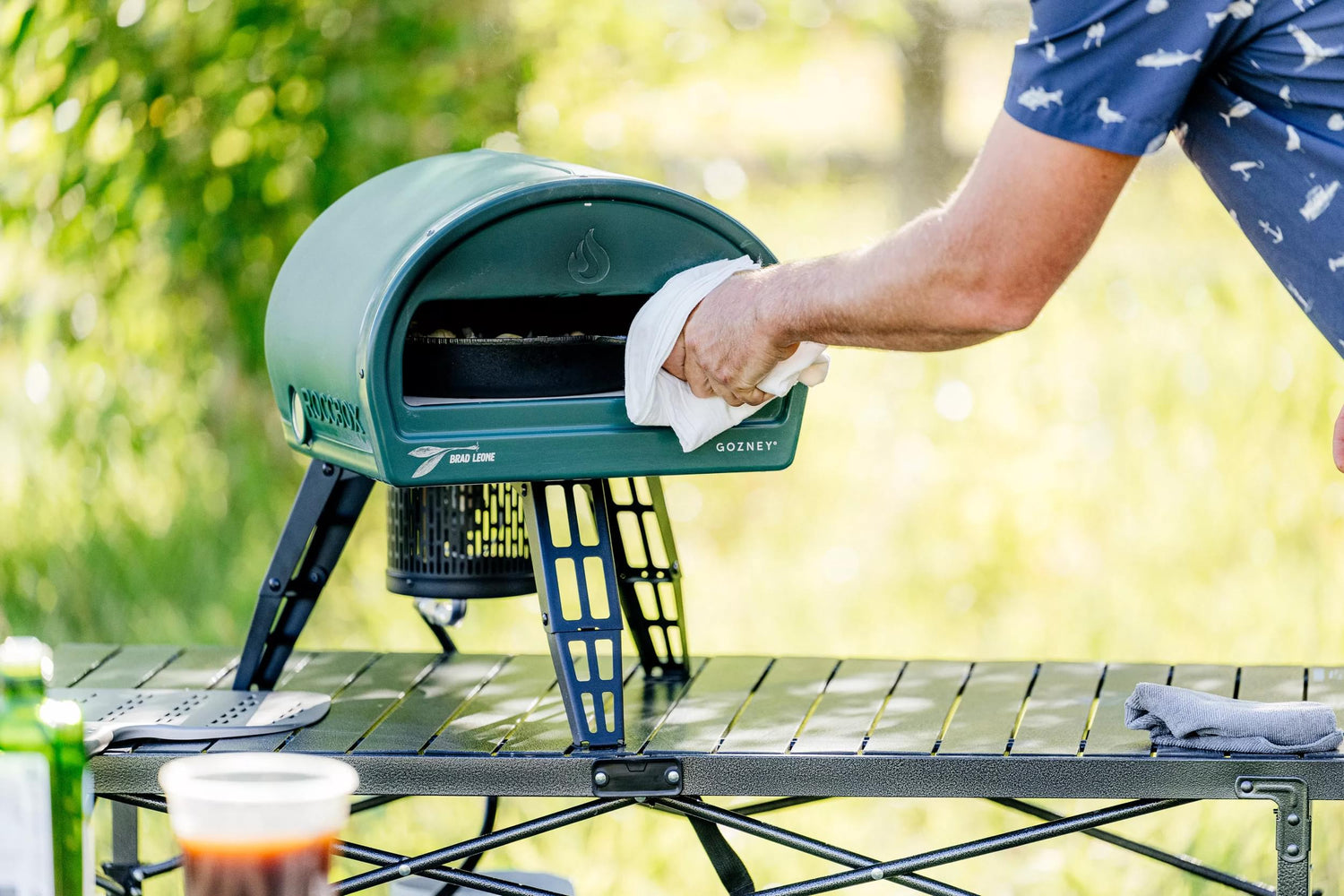It comes as no surprise that one of the most important ingredients in pizza dough is flour. So, selecting the most appropriate flour type (or types) will significantly impact the quality of your pizza dough.
There are three commonly used types of flour. All of them make great pizza dough, but the best one for you will depend on your exact needs. We've done the research to help you choose the best flour for you.
If you are still looking for a simple but delicious pizza dough recipe check out our Pizza Dough Recipe for Beginners.
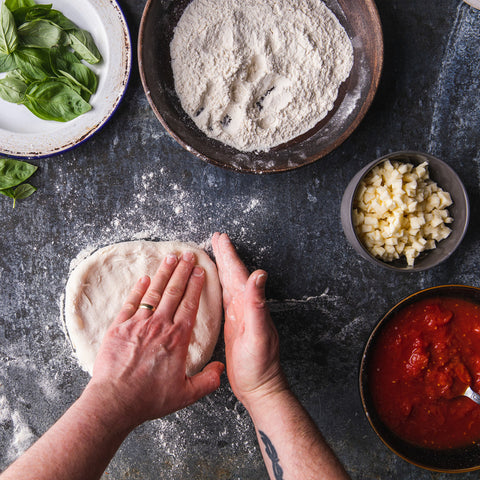
What is the best flour for pizza dough?
The main factors to consider when choosing a type of pizza flour is gluten (protein) content, fermentation time, hydration and baking temperature.
Gluten in pizza flour
Gluten is a protein that, when in contact with water, creates an elastic system throughout the dough. It is what gives pizza its chewy, springy nature, and therefore the more gluten in the flour, the chewier the pizza will be. This is why cake and pastry flours are used for delicate baked goods—no one wants to eat a chewy cake.
Different pizza styles require different amounts of protein. Pizza flours range from 9 to 15% protein content. While high protein content will yield a firmer and stronger dough, lower protein content flours will produce a softer dough.
Gluten is what gives pizza dough its stretchy consistency. Some flours create a crispier crust, while others give you a chewier crust. All are delicious—it just depends on what kind of crust you’re after.
Fermentation time
When choosing flour, you need to consider the fermentation time. Using the wrong flour might result in an over-proofed dough - light and fluffy but hard to handle dough, or a dense and gummy crust under-proofed dough
The process of proofing pizza dough consists of a two-step process, the bulk fermentation (rising), followed by proofing each individual pizza dough ball. Checkout our previous blogs to learn more about how to proof your pizza dough or how to fix over proofed pizza dough.

Bulk fermentation
In this step, you let the dough rise in one, single mass. It’s during bulk fermentation most of the increase in volume will happen. The reason is that yeast works better in one single dough, rather than individual, smaller dough balls.
To bulk ferment your dough, simply place it in an airtight container or a bowl covered with plastic wrap. You want it to be airtight to prevent the surface of the dough from drying out. Depending on the type of dough you make, bulk fermentation can be anything from 2-24 hours.
Final proofing
The last step is to proof the dough balls. This is usually the longest step in the process. You can do the final proofing either at room temperature or at a lower temperature to slow it down. Pizza dough should proof at room temperature anywhere from 1 to 24-hours or even more. While cold-proofing a pizza dough can take anywhere from 24 to 72 hours.
*Different pizza dough recipes require different fermentation times.
Hydration
Flour types will vary on how much water they absorb, so this is an important factor too. You probably know that Italian “00” flour is the finely milled grade. This fine milling affects water absorption so results in not needing as much water as normal bread flours – the “00” dough ends up a stickier dough. So, try to be consistent with your flours when you are adjusting hydration levels.
*Hydration is expressed as a ‘bakers percentage’ which is relative to the total flour in the mix. For example, if a recipe called for 100 grams of flour, adding 60 grams of water would make a dough with 60% hydration (6:10 ratio).
Tips For Optimum Hydration:
- If adding oil, don’t do it too early – it will coat the flour and prevent water from hydrating it properly. Always add the oil at the end of mixing.
- Soak your flour in the water for 30 minutes before adding other ingredients. This allows the flour to hydrate fully before yeast and salt is added. This process is called an autolyse
- Don’t add excess flour on the work bench when you are mixing and shaping. It can all add up to interfere with your percentages. Use a small bit at a time, or some olive oil.
- For help with wet dough, use our dough scraper while you are kneading. Use one hand to push and fold the dough and the scraper to gather it off the bench.

Baking temperature
Another factor to consider when you pick flour for your pizza is the temperature you’re baking at. Generally speaking, the ideal baking temperature allows the pizza crust to cook without burning itself and the toppings.

Pizza styles that require flour with high gluten content, such as Detroit and New York styles, have thicker crusts and so need lower temperatures (between 570/660°F) and more time to cook (around 5 to 10 minutes). On the other hand, to make a delicious crispy thin crust pizza like the Neapolitan style you need only around 60 to 90 seconds in a very hot oven (800/950°F).
With thick stone floors, dense insulation, and a unique rolling flame, your Gozney pizza oven was designed to reach and maintain the ideal temperature of 800/950°F.
Types of flour for pizza
So, what are the different types of flour for pizza and which one should you use?
Plain flour/All-purpose flour
Plain flour has a lower protein content – around 9-10% which is slightly too low for pizza making. A lot of home cooks will probably have this in the cupboard, and may be wondering if it’s OK to use for a recipe they’ve found. The answer is yes, it will work fine, but if you want a better pizza then you should pick up some flour with higher protein content.
Just as it sounds, all-purpose flour can be used for almost everything. It will taste good in most pizza dough recipes, but it can sometimes be more difficult to stretch out as it may tear more easily.
Strong white bread flour
You can find this in any supermarket thanks to an increased popularity in baking. This flour has around 12-14% protein content - high gluten flour gives a texture a bit more like bread – like a sourdough or ciabatta with its holes.
As it's got more gluten development, it will be very elastic. You may find it hard to stretch or roll out. The key is to bring it to room temperature and give it a decent rest before stretching.
Different flours absorb different amounts of water, with higher protein being able to take on more. Being consistent with your flours is a good way to get good results each time.
Bread flour won’t tear as you stretch it out, but it can sometimes be hard to form into the desired shape, continually springing back because of the high gluten content.
Double zero flour/Tipo 00 flour

“When in Rome do as the Romans do.” Likewise, when baking Neapolitan pizza, do as the Neapolitan pizzaiolos do. Use Tipo 0 or Tipo 00 flour. Tipo is a grading of flour on the Italian flour scale. And these flours have just the right amount of protein content - around 12.5% for pizza baking. Both Tipo 0 and Tipo 00 are also approved by the AVPN (The True Neapolitan Pizza Association), which manages the international regulations for Neapolitan pizza.

When it comes to flour for pizza there is no ‘one-size-fits-all' option. You need to consider the type of pizza style you want to prepare in order to pick the most appropriate flour.
To make a great New York Style, Detroit, Sicilian, or Chicago, you should choose a flour with a high percentage of protein content – 13-14.5% preferably. Neapolitan pizza, a much thinner dough, on the other hand, needs one with a lower percentage of protein 11-13%.
Want to learn more about pizza making? Sign up to our email list below and follow us on social @gozney.


